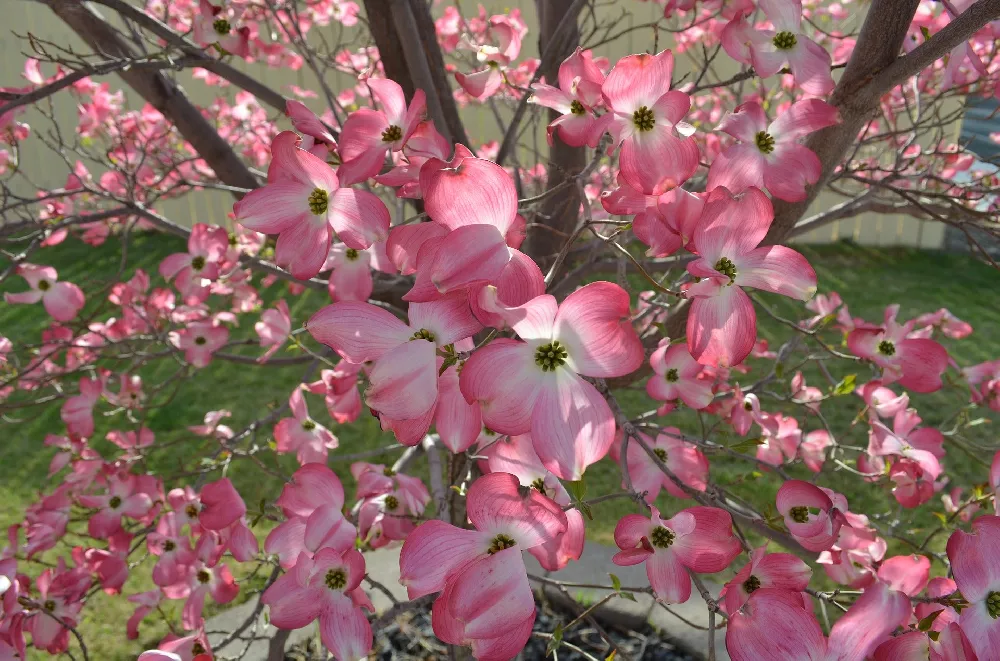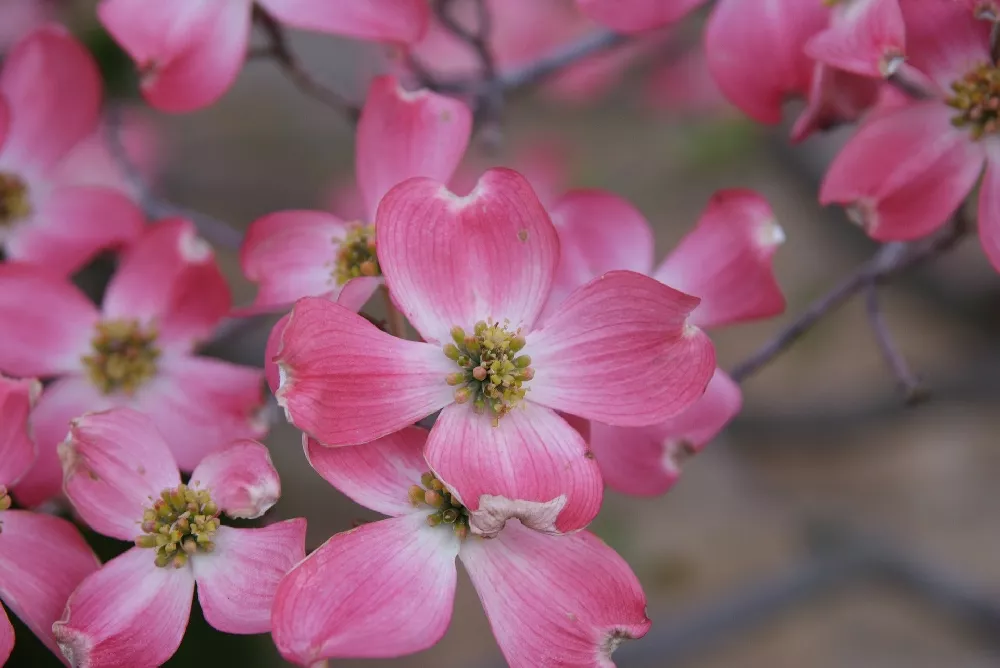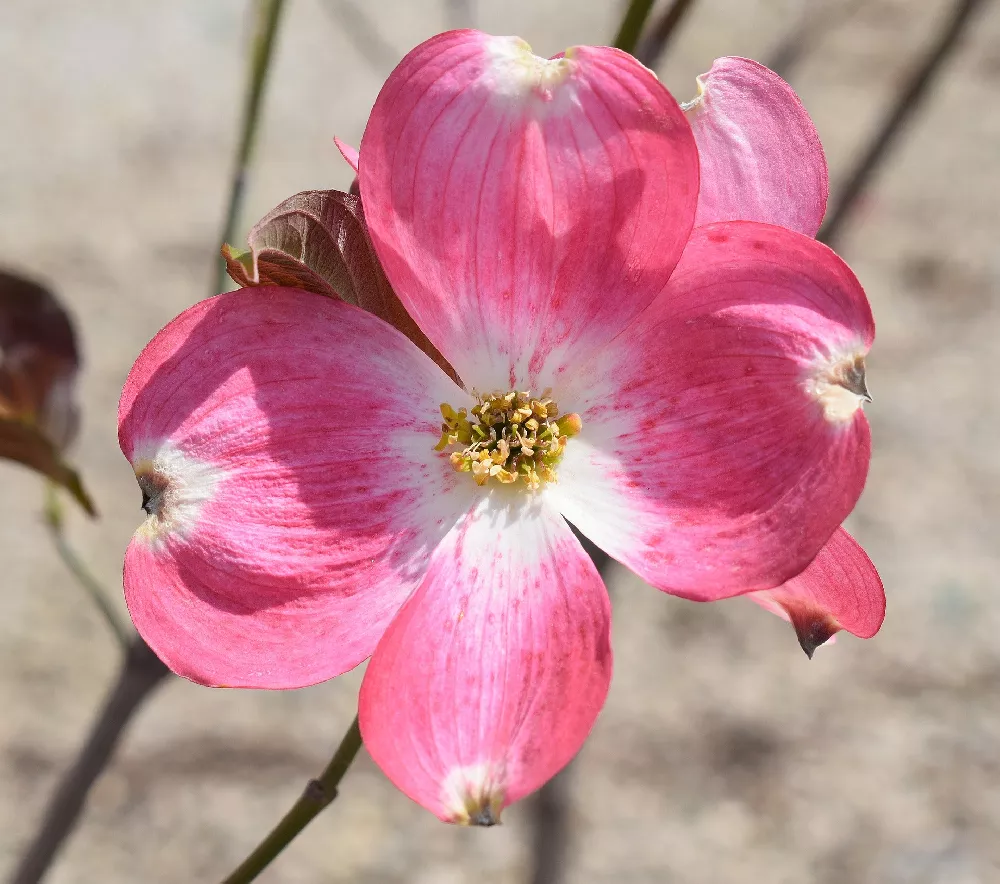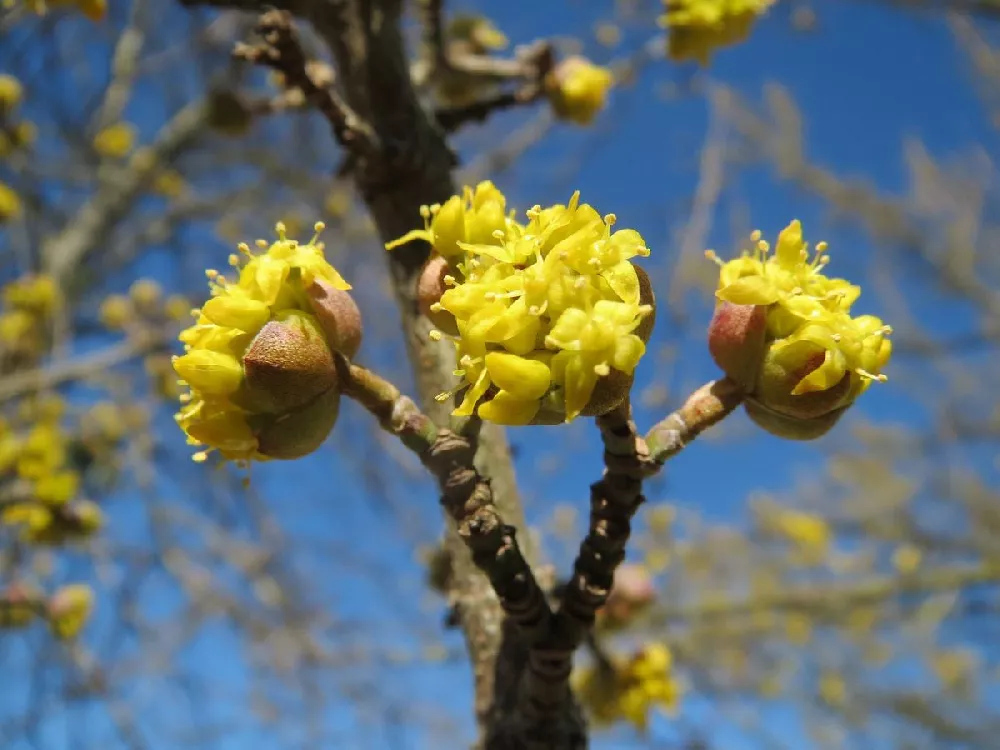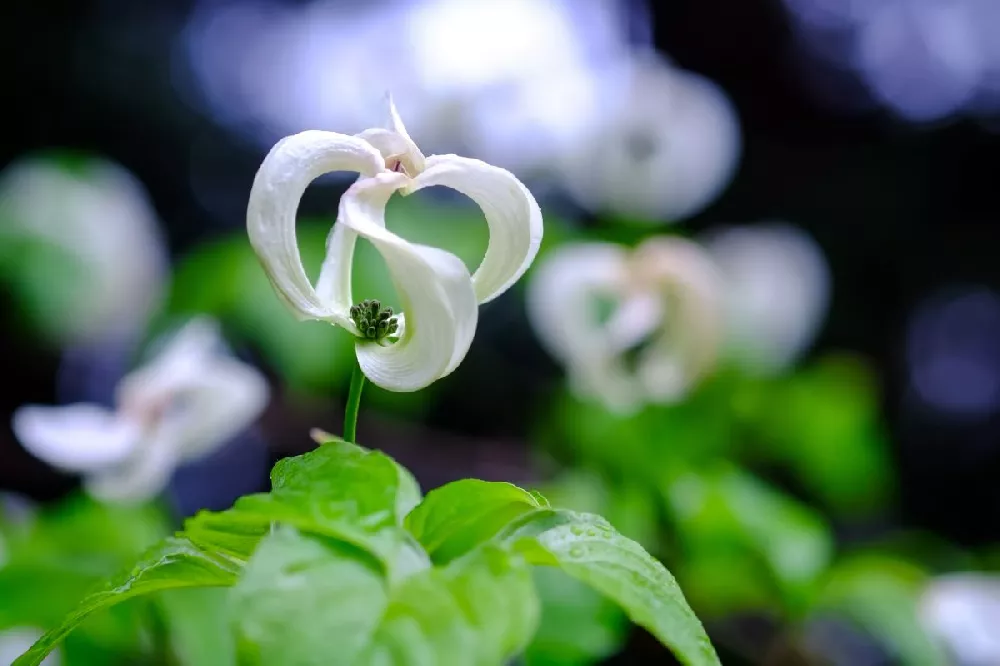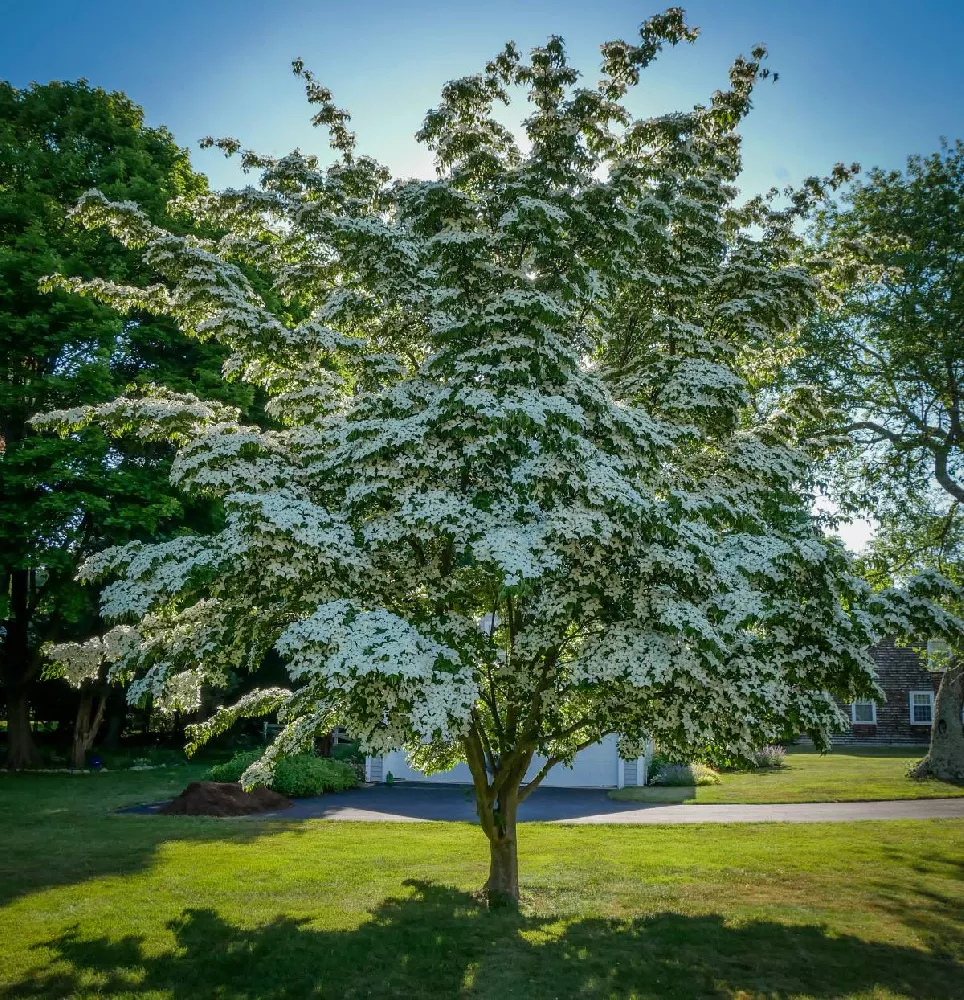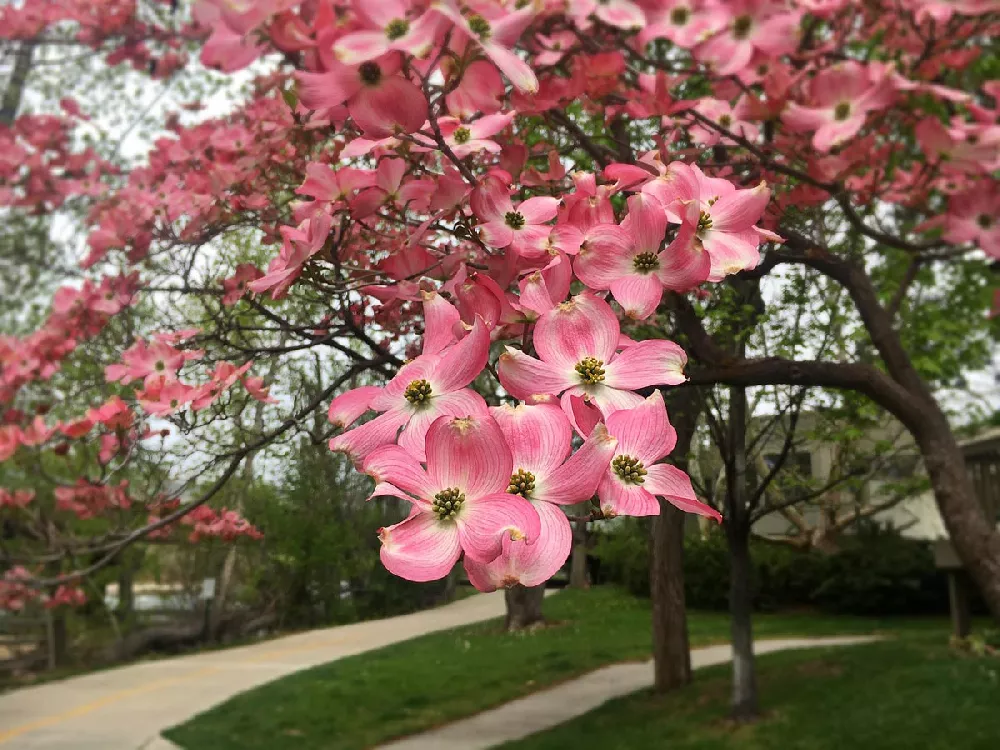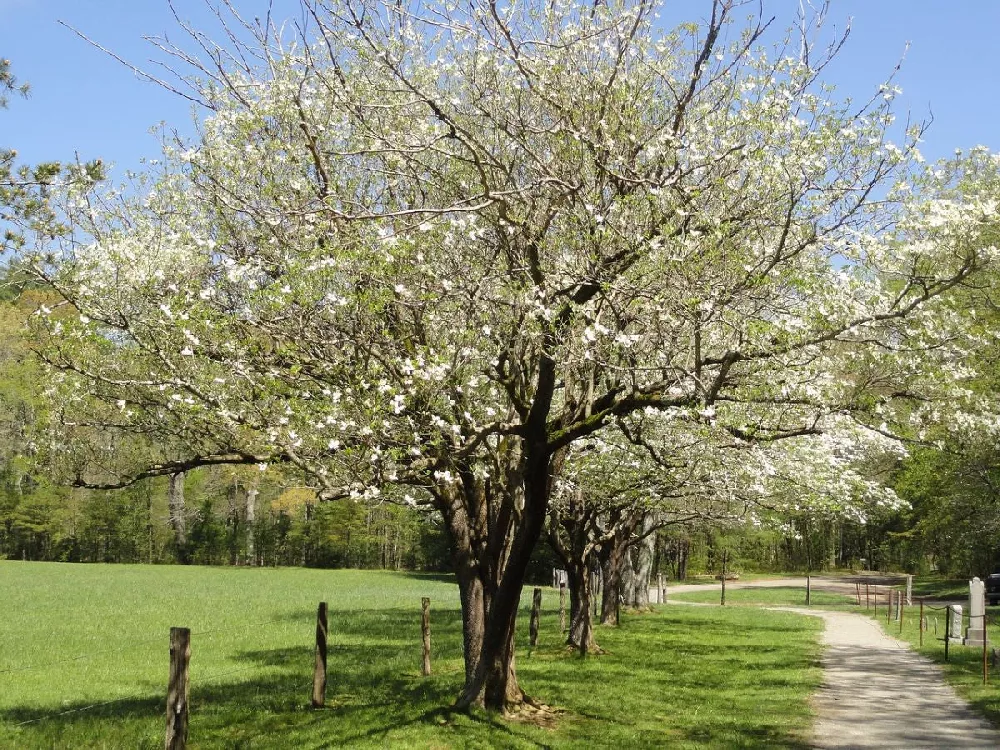Pink Flowering Dogwood Trees for Sale - Buying & Growing Guide
- Ships in 1-2 days
- 1-Year Warranty Eligible
- Pots or accessories are not included unless specified in the product options.
Shipping Details:
Once your order is shipped, you’ll receive an email with a tracking number and estimated delivery date. Most orders ship immediately, but some items are seasonal and may only ship in spring or fall. These products are noted on the website.
The pink flowering dogwood (Cornus florida ‘rubra’) is a deciduous tree species known for its pastel-pink flowers. Native to eastern North America and parts of Mexico, the pink flowering dogwood is widely planted in residential areas around the world as an ornamental tree. The star-shaped blooms appear in April and May signaling the start of spring.
- Attracts hummingbirds and butterflies.
- The pink flowering dogwood is the state tree of Virginia and Missouri.
- Other common names for the species include American dogwood and Florida dogwood.
Plant Care
Sunlight

Pink flowering dogwood trees need at least five hours of sunlight per day.
Watering
Once established, these trees should be watered once per week.
Fertilizing

Fertilizer with an NPK ratio of 12-4-8 is ideal for pink flowering dogwood trees.
Planting and Care
Planting instructions
The pink flowering dogwood tree enjoys partial shade, but it requires at least five to six hours of sunlight per day. The species thrives in well-drained, slightly acidic soil. Once you have determined your planting location, dig a hole as deep as the tree’s root ball and twice as wide. Place the tree in the hole and backfill it with dirt. Tamp down the soil lightly and water thoroughly, adding more soil if settling occurs. A two to three inch layer of mulch helps retain moisture as the plant establishes itself.
Watering and nutrients
Water your newly planted dogwoods every few days, keeping the soil consistently moist but not soggy. Established trees should be watered once per week. Do not allow the soil to completely dry out between waterings or your trees may develop problems with discolored foliage and bloom production. Fertilize your dogwood trees between March and June, before the heat of summer comes. Apply a light layer of compost or all-purpose fertilizer, gently working it into the soil around your trees.
Pollination
The pink flowering dogwood relies on many different insects and animals for pollination. The inside of the flower is a cluster of numerous tiny flowers that contain pollen. The flowers on the ‘rubra’ cultivar bloom April through May, opening up their buds to attract bees, butterflies, hummingbirds, and other pollinators. Once pollinated, the pink flowering dogwood tree produces tiny, dark, red berries that provide a source of food for birds and animals. The flowering dogwood is monoecious, as it has both male and female flowers and will always produce fruit.
Pruning
Prune when the tree is dormant, during late autumn or winter. Remove any dead, dying, or diseased branches and dispose of infected branches away from other dogwood trees. When pruning, sterilize your shears between cuts to prevent spreading infection. Prune any small twigs or overlapping branches, to encourage air circulation throughout the tree’s canopy. Never prune in the spring, as boring insects may invade the wounded areas on the dogwood.
Pests and diseases
Dogwood anthracnose is the biggest threat to flowering dogwood trees. If this fungal infection is ignored, your trees will likely die within a few years. To remedy an anthracnose infection, remove the diseased parts of the tree and promote proper airflow. Aphids and scales are common pests found on dogwood trees, to eliminate them, try spraying the tree with a strong stream of water. If that does not solve the problem, neem oil or an insecticide can be applied. It should be noted that scales are notoriously difficult to eradicate, so you may need the help of a professional arborist. Proper care and maintenance of your pink flowering dogwoods are the first line of defense against most pests and diseases.
FAQs
How big do dogwood trees grow?
In ideal light conditions, the pink flowering dogwood can grow up to 40 feet tall with a wide, rounded canopy. In shady conditions, these trees tend to take on a more “leggy” profile as they reach for the light. The trees have a moderate to fast growth rate, taking about 25 years to reach their maximum height. The average lifespan of pink flowering dogwoods is about 80 years, but some individuals have been known to live past 100 years.
How does the ‘rubra’ cultivar compare to other dogwood varieties?
There are many varieties of flowering dogwood trees classified as Cornus florida. The most notable characteristics of the different varieties are their flower and foliage color. The ‘Barton’ cultivar features white blooms with pink spots and tips. The foliage of the ‘Welchii’ variety is variegated, transitioning between green and cream-white. The Japanese dogwood is similar in appearance to the pink flowering dogwood, but its blooms appear in denser bunches.
Why is my dogwood tree not blooming?
There are a variety of factors that lead to a dogwood tree not blooming. Young dogwood transplants may take two to three years to produce their first set of flowers. Wild dogwood trees grow in partial shade, so too much or too little sunlight causes issues with flowering. Avoid a late spring frost killing your dogwoods flower buds by covering the trees during the cold snap. Over or under-watering may also cause issues with flowering.
How is Cornus florida propagated?
Purchasing trees from a nursery is the best way to start a new set of pink flowering dogwood trees for most gardeners. The species also grows well from seed. Planting seeds in the fall will cause new trees to emerge in the spring, as long as they go through a period of cold stratification (subjecting the seeds to both cold and moist conditions). Cuttings can also be taken and rooted successfully, although this is a more specialized process that requires the use of IBA treatment, misting, and other uncommon techniques.
